Jan Bednarik
Learning to Stabilize Faces
Nov 22, 2024Abstract:Nowadays, it is possible to scan faces and automatically register them with high quality. However, the resulting face meshes often need further processing: we need to stabilize them to remove unwanted head movement. Stabilization is important for tasks like game development or movie making which require facial expressions to be cleanly separated from rigid head motion. Since manual stabilization is labor-intensive, there have been attempts to automate it. However, previous methods remain impractical: they either still require some manual input, produce imprecise alignments, rely on dubious heuristics and slow optimization, or assume a temporally ordered input. Instead, we present a new learning-based approach that is simple and fully automatic. We treat stabilization as a regression problem: given two face meshes, our network directly predicts the rigid transform between them that brings their skulls into alignment. We generate synthetic training data using a 3D Morphable Model (3DMM), exploiting the fact that 3DMM parameters separate skull motion from facial skin motion. Through extensive experiments we show that our approach outperforms the state-of-the-art both quantitatively and qualitatively on the tasks of stabilizing discrete sets of facial expressions as well as dynamic facial performances. Furthermore, we provide an ablation study detailing the design choices and best practices to help others adopt our approach for their own uses. Supplementary videos can be found on the project webpage syntec-research.github.io/FaceStab.
MACS: Mass Conditioned 3D Hand and Object Motion Synthesis
Dec 22, 2023Abstract:The physical properties of an object, such as mass, significantly affect how we manipulate it with our hands. Surprisingly, this aspect has so far been neglected in prior work on 3D motion synthesis. To improve the naturalness of the synthesized 3D hand object motions, this work proposes MACS the first MAss Conditioned 3D hand and object motion Synthesis approach. Our approach is based on cascaded diffusion models and generates interactions that plausibly adjust based on the object mass and interaction type. MACS also accepts a manually drawn 3D object trajectory as input and synthesizes the natural 3D hand motions conditioned by the object mass. This flexibility enables MACS to be used for various downstream applications, such as generating synthetic training data for ML tasks, fast animation of hands for graphics workflows, and generating character interactions for computer games. We show experimentally that a small-scale dataset is sufficient for MACS to reasonably generalize across interpolated and extrapolated object masses unseen during the training. Furthermore, MACS shows moderate generalization to unseen objects, thanks to the mass-conditioned contact labels generated by our surface contact synthesis model ConNet. Our comprehensive user study confirms that the synthesized 3D hand-object interactions are highly plausible and realistic.
Temporally-Consistent Surface Reconstruction using Metrically-Consistent Atlases
Nov 12, 2021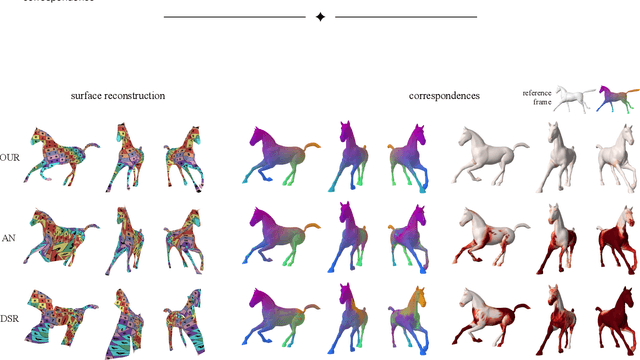
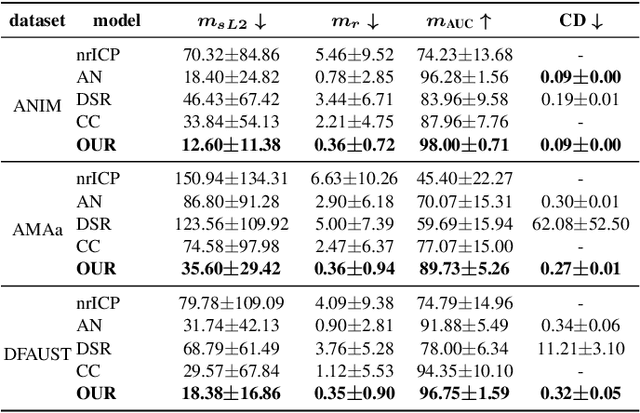
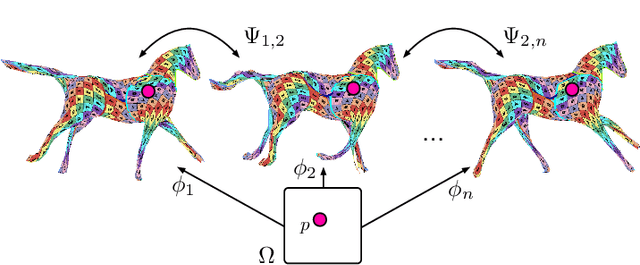
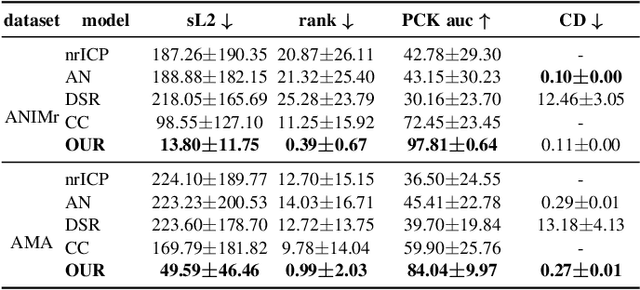
Abstract:We propose a method for unsupervised reconstruction of a temporally-consistent sequence of surfaces from a sequence of time-evolving point clouds. It yields dense and semantically meaningful correspondences between frames. We represent the reconstructed surfaces as atlases computed by a neural network, which enables us to establish correspondences between frames. The key to making these correspondences semantically meaningful is to guarantee that the metric tensors computed at corresponding points are as similar as possible. We have devised an optimization strategy that makes our method robust to noise and global motions, without a priori correspondences or pre-alignment steps. As a result, our approach outperforms state-of-the-art ones on several challenging datasets. The code is available at https://github.com/bednarikjan/temporally_coherent_surface_reconstruction.
Temporally-Coherent Surface Reconstruction via Metric-Consistent Atlases
Apr 14, 2021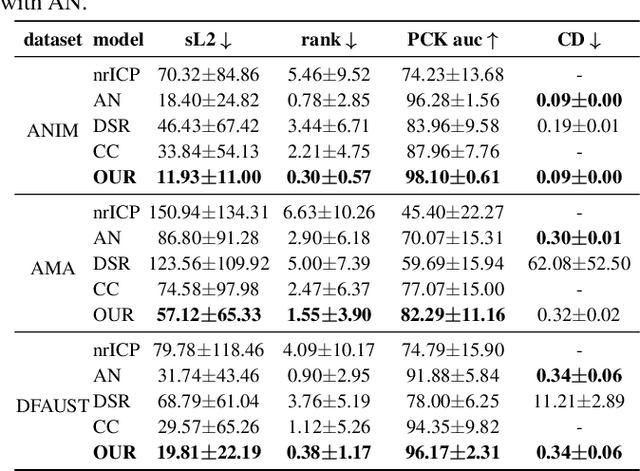
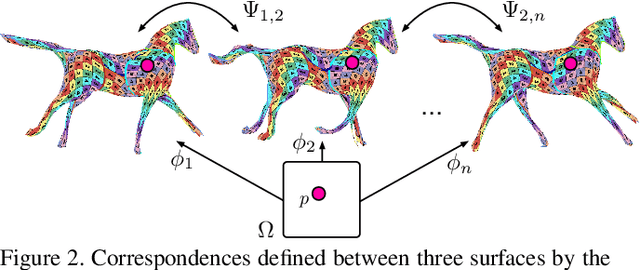

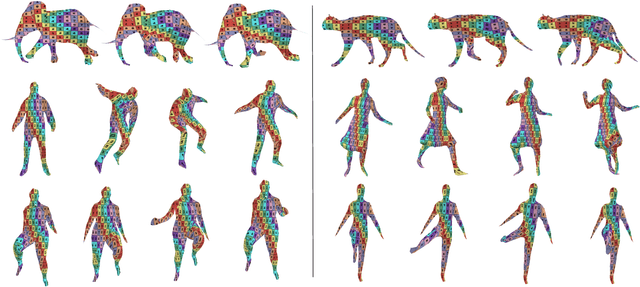
Abstract:We propose a method for the unsupervised reconstruction of a temporally-coherent sequence of surfaces from a sequence of time-evolving point clouds, yielding dense, semantically meaningful correspondences between all keyframes. We represent the reconstructed surface as an atlas, using a neural network. Using canonical correspondences defined via the atlas, we encourage the reconstruction to be as isometric as possible across frames, leading to semantically-meaningful reconstruction. Through experiments and comparisons, we empirically show that our method achieves results that exceed that state of the art in the accuracy of unsupervised correspondences and accuracy of surface reconstruction.
Shape Reconstruction by Learning Differentiable Surface Representations
Nov 25, 2019
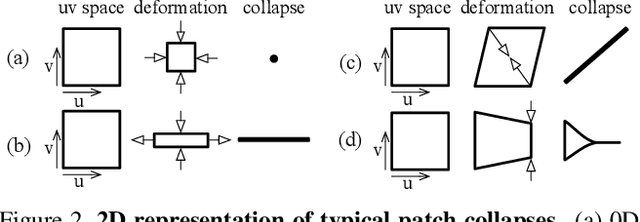
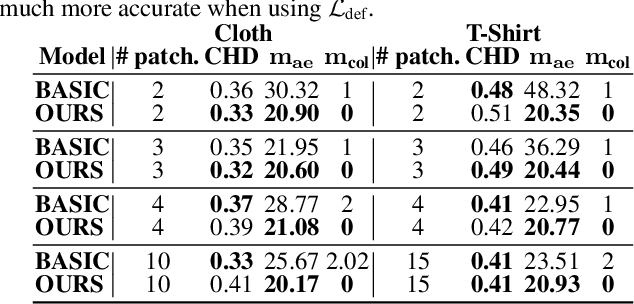

Abstract:Generative models that produce point clouds have emerged as a powerful tool to represent 3D surfaces, and the best current ones rely on learning an ensemble of parametric representations. Unfortunately, they offer no control over the deformations of the surface patches that form the ensemble and thus fail to prevent them from either overlapping or collapsing into single points or lines. As a consequence, computing shape properties such as surface normals and curvatures becomes difficult and unreliable. In this paper, we show that we can exploit the inherent differentiability of deep networks to leverage differential surface properties during training so as to prevent patch collapse and strongly reduce patch overlap. Furthermore, this lets us reliably compute quantities such as surface normals and curvatures. We will demonstrate on several tasks that this yields more accurate surface reconstructions than the state-of-the-art methods in terms of normals estimation and amount of collapsed and overlapped patches.
 Add to Chrome
Add to Chrome Add to Firefox
Add to Firefox Add to Edge
Add to Edge